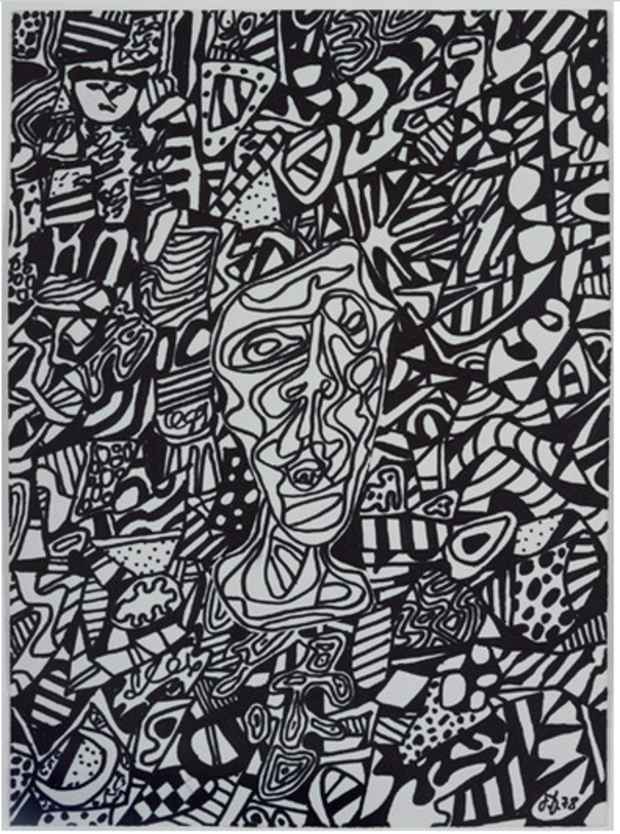Jean Dubuffet “Excursions en no man’s space”
The Pace Gallery (32 E 57th St)

This event has ended.
Pace presents Excursions en no man’s space, a solo exhibition of Jean Dubuffet’s drawings made between 1975 and 1985. The exhibition will be on view at 32 East 57th Street from September 10 through October 26, and accompanied by a catalogue including an essay by Dubuffet’s art dealer and long-time friend, Arne Glimcher. The gallery has presented work by Jean Dubuffet since 1968.
Excursions en no man’s space features 52 works, mostly black and white but concluding with the primaries: red, yellow and blue. They range in content from figurative to abstract and elemental forms. Made during the last ten years of his life and career, these drawings are “landscapes of the mind,” a space between being and fantasy. In Dubuffet’s own words, these works are “excursions in no man’s space.”
In 1974, after 12 years spent on his Hourloupe cycle (the artist’s longest-running series), Dubuffet began new experiments, expanding his color palette and brushwork and revisiting techniques such as collage from earlier periods in his career. These late drawings are intimate in scale (ranging in size from 20 by 27 1/2 inches to 9 13/16 by 8 11/16 inches) compared to Dubuffet’s other late projects such as his expansive Théâtres de Mémoire [Theaters of Memory], yet embody the same structural approach.
Dubuffet’s black and white drawings, in particular his Conjectures [April 16, 1975 – May 29, 1975], Memorations [September 2, 1978 – January 5, 1979] and Situations [April 23, 1978 – April 24, 1980] series contain cut-out figurative imagery collaged into their surrounding landscape. In some works, the ground appears as a patchwork of patterns, while other works show figures of people, cars and trees enmeshed in a network of furiously scrawled lines. In his essay Arne Glimcher writes, “One of the signatures of Jean Dubuffet’s practice is the annihilation of hierarchical values, reflected in his construction of an art that rebels against consensus societal valuations.”
The color drawings, Argument and Activation, made between 1983 and 1985, mirror the two final series of paintings for Dubuffet, Mires [Kowloon] and Non-Lieux. In both series, the artist returns to a color palette and eliminates the reference imagery of cutout characters. Glimcher writes, “They are landscapes of the mind in which there is no harmony, no reason, no hierarchical values, and at least for Dubuffet the end of picture making…”
Jean Dubuffet (1901–1985) was one of the most influential painters of the twentieth century. A student of the Académie Julian in Paris, he left school in 1918 to pursue an independent form of art education. Like many of his generation in Europe in the wake of World War II, Dubuffet sought artistic authenticity outside of tradition, in the margins of society. He looked to the art of prisoners, psychics, the uneducated, and the insane to liberate his own creativity and coined the term “Art Brut,” a predecessor to outsider art of the late 1940s. In his lifetime, Jean Dubuffet was the subject of 12 major museum retrospectives including The Museum of Modern Art (1962), which traveled to The Art Institute of Chicago and the Los Angeles County Museum of Art; Tate Gallery, London (1966); Stedelijk Museum, Amsterdam (1966); Museum of Fine Arts, Dallas (1966), which traveled to the Walker Art Center, Minneapolis; Musée des Beaux-Arts, Montreal (1969-70); and the Solomon R. Guggenheim Museum (1973, 1981). In 1973, Dubuffet established a foundation to preserve and realize his monumental works. The foundation is located in Paris and in Périgny-sur-Yerres, where the Closerie Falbala, a monumental sculpture and the artist’s major work (designated a historic monument in 1998), is situated near the former sculpture studios that house the artist’s architectural models. The Villa Falbala, which Dubuffet built to shelter his Cabinet Logologique, stands at the center of this enormous walled simulacrum of a garden. Paintings and elements from the artist’s production of Coucou Bazar, performed in 1973 at the Solomon R. Guggenheim Museum, New York, are also on view in Périgny-sur-Yerres. Today, Jean Dubuffet’s work can be found in more than 60 public collections worldwide including the Hirshhorn Museum and Sculpture Garden, Washington D.C.; The Metropolitan Museum of Art, New York; Musée National d’Art Moderne, Centre Georges Pompidou, Paris; The Museum of Modern Art, New York; Solomon R. Guggenheim, New York; Stedelijk Museum, Amsterdam; and the Tate Gallery, London. Pace Gallery has represented Jean Dubuffet since 1968.
Media
Schedule
from September 10, 2013 to October 26, 2013